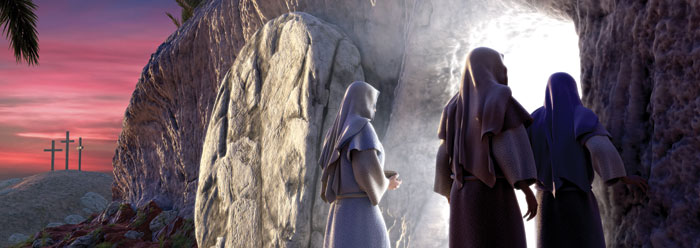The
Passage
Matthew
9:14-17; Mark 2:18-22; Luke 5:33-39[1]
The
disciples of John and of the Pharisees were fasting. Then they came and said to
Him, “Why do the disciples of John and of the Pharisees fast, but Your
disciples do not fast?”
And
He said to them, “Can you make the friends of the bridegroom fast while the
bridegroom is with them? But the days will come when the bridegroom will be
taken away from them; then they will fast in those days.”
Then
He spoke a parable to them: “No one puts a piece from a new garment on an old
one; otherwise the new makes a tear, and also the piece that was taken out of
the new does not match the old. And no one puts new wine into old wineskins; or
else the new wine will burst the wineskins and be spilled, and the wineskins
will be ruined. But new wine must be put into new wineskins, and both are
preserved. And no one, having drunk old wine, immediately desires new; for he
says, ‘The old is better.’ ”
A
Little Background
Fasting
is abstaining from food for a set period of time. In the Old Testament, fasting
was done on the Day of Atonement, during times of crisis as in the time of
Esther, and in times of mourning. Through the prophet Isaiah, God told the
Israelites that He hated their fasts because their hearts were not toward Him.
He told them that when they fasted they should “afflict their souls”. John’s
disciples were fasting for the purpose of repentance—afflicting their souls. The
Jews had also adopted the practice of fasting twice a week (Luke 18:12) on
Mondays and Thursdays. It is likely that the occasion of this passage is on one
of those days. The Pharisees fasted to be seen by others as a show of their
religious fervor.
Some
Explanation
Can you make the friends of
the bridegroom fast while the bridegroom is with them?... In Bible times, a Jewish
wedding included a feast and a long celebration lasting as much as a week or
more. It was a time of joy, not a time of mourning. Jesus identified Himself as
the bridegroom as a picture of Christ’s relationship to believers and a future
time when the church will be joined with Him in heaven as a bride. (Revelation 19)
And no one puts new wine into
old wineskins...
Wineskins were made of leather (often goat skin) and were sealed with some kind
of resin to keep liquid from seeping through. Wines were a
fermented
liquid. When the skins became old, they
lost suppleness. They could burst under the pressure of fermentation.
Therefore, new wine put into old wineskins would be risky.
Observations
and Insights
The
three topics that Jesus brings together here: fasting, fabric, and wine all
have a common theme. They all represent pictures of the old form of worship
contrasted with the new. Jesus had come to establish a new covenant, not based
on Law, but in the new life that His death burial and resurrection would bring.
The Jews had adopted fasting twice a week as a religious ritual. They exalted
their ability to strictly keep the Law to gain God’s favor. Jesus had come to present
Himself as the righteous fulfilment of the Law and establish Himself as the
only way to relationship to God the Father. He would fulfill God’s promise of
turning hearts of stone that could not keep the law perfectly, into hearts of
flesh that would desire to live in God’s ways.
New
fabric sewn onto old cloth is not practical. The new is stronger, the old is
weak. When the garment is washed, the new will pull away. Likewise, when new
wine is poured into old wineskins, the new wine will burst the old skin. Jesus
did not come to update or improve the old system. It would be abolished, because
He would now fulfill it, bringing in a completely new and better covenant.
This
challenge by the Jews and Jesus’ explanation is an important foundation for the
next three events in Jesus’ ministry when Jesus will be confronted by the Jews
for breaking Sabbath laws. Jesus will heal a lame man and command him to carry
his bed (work that was supposedly forbidden on the Sabbath), pick grain, and
heal another man’s crippled hand—all on the Sabbath.
The
context is clear—Jesus is defying the Jews’ distorted laws and declaring that
the old law-keeping regime will be
done away with. But don’t misunderstand the importance of the Law. The law of
God is perfect, converting the soul, Psalm 19 tells us. In the Old Testament,
the law was also equated with God’s Word, His judgments, testimonies,
ordinances, commandments, etc. (Psalm 119). God’s law shows us God’s character.
The truth is that we cannot keep the law and thus cannot by our own effort earn
our way back to God’s favor. The value
of the law is that it shows us our failure and leads us to call on the Lord for
mercy and salvation. When we receive Jesus’ sacrifice on our behalf, the Holy
Spirit comes to us and lives in each Christian to cause us to desire God’s
ways. This is what is meant by Ezekiel 36:26, 27 “I will give you a new heart
and put a new spirit within you; I will take the heart of stone out of your
flesh and give you a heart of flesh. I will put My Spirit within you and cause
you to walk in My statutes, and you will keep My judgments and do [them].
But
we so often default to the old, just as Jesus said, “And no one, having drunk old wine, immediately desires new; for he
says, ‘The old is better.’ ” It can be hard to let go of our own self
effort. Self likes a show; it loves for others to see how proficient it is.
Just as the Pharisees added to the law by requiring more burdensome proofs of
religious fervor, we also subtly add requirements to our faith. Our zeal can
easily turn to religious pride. For as much as we hate Pharisee-ism, we are so
dangerously close when we turn worship into formula, when we take one
millisecond to look at self rather than subjecting self to supremacy of the
Lord Jesus.
Jesus
declared Himself to be the focus of worship. It sometimes seems so trite to say
that “Jesus is the answer.” But truly the more that I read the Word, study it,
and keep my heart’s focus on it, the more I am satisfied in just Him. I pray
that as we continue in our Harmony reading again that you will also find your
joy and fullness in Him.
Next: John 5:1-16
Next: John 5:1-16
[1]
Note:
Much of the Harmony readings will be pieced together like a puzzle putting the
four Gospels together into one narrative. I am copying the order or format from
A Simplified Harmony of the Gospels,
George W. Wright, Holman Bible Publishers, 2001. However, I am using the New
King James rather than the HCSB. This order is from the research of Wright and
is open to discussion. Of course, you can also read the passages side by side
separately if you prefer.



